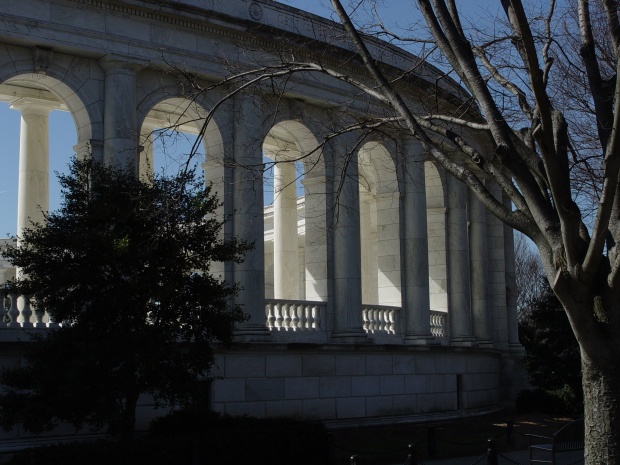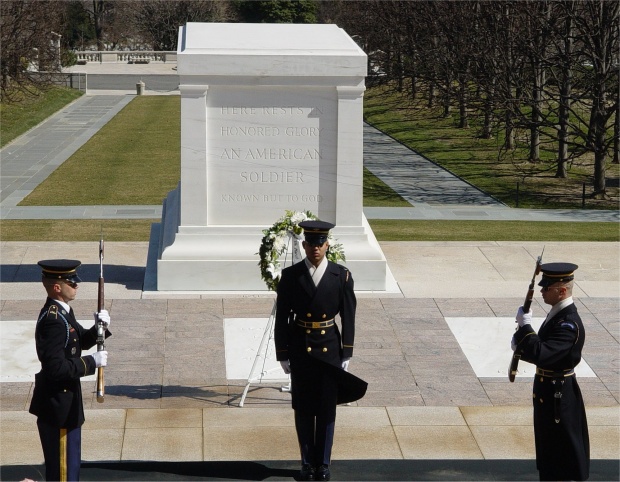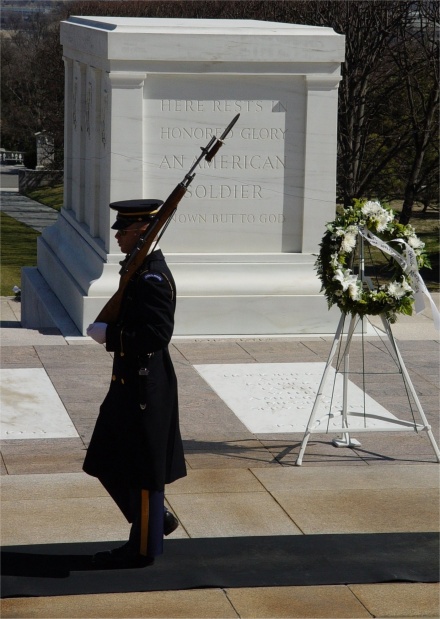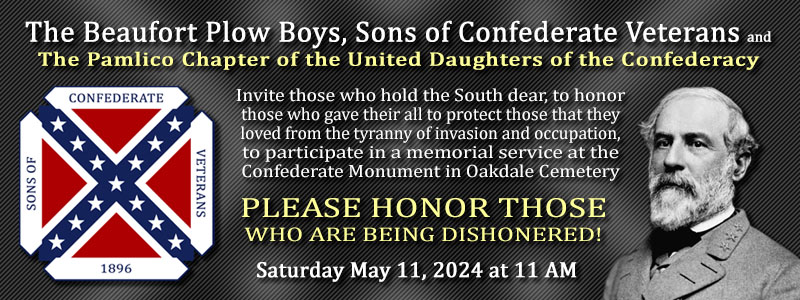Boldly Committed to Truth Telling in the False Face of Fakery
Washington, DC: Part I, Arlington Cemetery

The last half of this day trip was spent at Arlington Cemetery, where we were given a prime viewing station at the tomb of the Unknown Soldier. It was a moving display of the changing of the guard that is conducted: at the top of the hour of every day, of every year as long as we are a nation. This is our nation's constant respect for those soldiers, who paid the ultimate sacrifice for our freedom, and now for perpetuity lie in an unknown grave, often in a far away land.

Within this open rotunda, the changing of the guard is a moment, when the citizenry of the United States witnessing this ritual can bond with those protecting the memory and those who must be remembered. Truly, this ceremony reinforces our obligation, not only to those unknown, but also those soldiers who are known, and have sacrificed life and limb to protect their families, their nation.
After the ceremony, we had some free time to sit and soak up the atmosphere or investigate the premises. I chose to walk the grounds. I visited John F. Kennedy’s grave with the eternal
 flame, and then I sought out a more obscure American hero to whom I should pay my respects - Lt. Audie Murphy.
flame, and then I sought out a more obscure American hero to whom I should pay my respects - Lt. Audie Murphy.
Lt. Murphy was raised as an under educated son of a Texas sharecropper, who left the eighth grade to help support his family, when his father left. As the 6th of 12 children, he felt a responsibility to his family, and became the head of that when his mother died at the age of 16. At the age of 18, Audie joined the regular Army (after being rejected by the Marines and the Airborne because he was so small in stature), and was assigned to the 3rd infantry. Murphy joined the military to satisfy two purposes: to aid in the defense of his nation after the Japanese initiated hostilities against the United States in the sneak attach of the Pacific Fleet at Pearl Harbor, and to make a steady paycheck to support his poor remaining siblings back home in Texas.
As an enlisted private, Murphy showed initiate, courage and a talent with his rifle as a crack shot. From his part in the U.S. campaigns from North Africa, to Sicily, to Italy, to France, to Germany, private Murphy was promoted to sergeant due of his brave leadership and his unique ability to kill German soldiers in mass. By the time Audie received his third and final wound, this eighth grade drop-out received a battlefield commission as Lieutenant. Lt. Audie Murphy is, and may always remain, the most decorated soldier in the history of the United States.
Audie Murphy became a national celebrity, and Hollywood made him a star, with Audie Murphy eventually starring in 49 movies, including "Red Badge of Courage" and "To Hell and Back," Murphy's autobiography. Audie Murphy, actor and American hero, always put his family and his nation first, far beyond his own interests beyond his own interests, and therefore, I consider him to one of the greatest men buried at Arlington Cemetery. He is buried in the manner as was dictated by his rank, a small headstone, with no significant inscription, which is so fitting for such a humble hero.
For all living American citizens, our nation has been at war at some point in their lives. Many of us have been called to serve, some have not; however, for all of us that know the pain of war, and those of us who can only be thankful for those that have, we should all appreciate those who have paid the ultimate price, and have sacrificed to defend, what one should never take for granted, our rare privilege of freedom.
Since that winter day trip with NC delegation, I have returned to Arlington on a number of occasions. I have taken all of my children, at least once, to instill within them a sense of patriotism and appreciation for those patriots that have sacrificed their most precious possession for God and country. I will return again for a variety of reasons; especially for the sense of peace I gain as I stroll along the paved paths traversing this beautiful and solemn final home for the heroes that were, and will always remain, the best of us.
Comments
|
I know. It really is a solemn event.
|
|
Sorry guys, broke my own rule just three comments ago. I thought the article would get us back on track about Arlington. I was last there in the 7th grade and I remember the presidios of the guards at the tomb. Being a guard there is one of the highest honors you can get in the service..
I understand they are restricting burials there as they are giving out of space. |
|
I thought the subject was Arlington Cemetery.
|
|
Tony Bobby's cited article reads:
"1. In the city’s early days, the periodically-flooded area at the base of Capitol Hill was a problem that the shoddily built canal running through it did not solve. Instead of fixing the problem itself, the federal government handed the land over to private developers on condition that they drain it. Now the Capitol Reflecting Pool is where the swamp used to be. 2. The neighborhood of Swampoodle appropriately preserves the Irish pronunciation of “puddle” where the two main branches of Tiber Creek joined in a shallow valley. Drainage conditions got a lot worse before they got better for the immigrants who settled here in the mid-19th century. 3. Streams flowing out of the surrounding hills saturated the land where Le Droit Park was developed. A Florida Avenue combined sanitary and storm collector sewer only relieved local drainage problems for a while after it was completed in the 1880s. 4. The Anacostia River flowed too slowly to take away the effluent of the Florida Avenue sewer, so it settled on the foul tidal flats for decades while Congress refused to fund corrective re-engineering of the river. 5. The steep hills looming over the northwest perimeter of the city were drained by many small streams that saturated the sandy clay soil near S Street between 16th and 19th streets. Rising real estate values allowed this land to be improved before any substantial settlement occurred in the later 19th century. 6. Tiber Creek was first made into a canal, then into a sewer draining much of downtown. It flowed out onto the Potomac Flats, within easy smelling distance of the White House, and secured the city’s reputation for swampiness. Dredging the river solved that problem, with East and West Potomac Parks as pleasant and useful byproducts." Our discussion pends on a formal definition vs. a logical one based on the nose of people who lived there and endured the heat of a muggy summer, gentlemen! As a child I visited my Aunt Eber Lieler (strange GA country name) who worked at the Aberdeen Proving Grounds and lived at Haver de Grace, Maryland. It was more than hot and sticky with heat waves rising off the marshes---swamps, maybe not---BUT enough heat and humidity to welcome a gator IF the winters were not so cold! The rightness of any one of us 3 is beside the point --- as many of Stan's surveys are so lopsided as to make me laugh. If I were farming there at the inception it would have been the lowest kind of land on the Plantation and most unsuitable for agriculture. I am just glad to live in the loamy soil of Beaufort County which is far superior to anything around DC in the beginning. Smelly and wet dirt stinks---not matter where it might be and that was DC in the beginning, my friends! |
|
Washington, DC may be about 8% wetland and much of it around the tidal basin where the Jefferson Memorial stands.
There is less swamp in Fairfax County and even less around Arlington. t't'It is the beginning of the Piedmont on both sides of the Potomac. That's just the truth of it. |
|
Gene, I was a surveyor for 4 years, and I surveyed real coastal plains wetland and real Piedmont, and I know what either looks like.
Observe the pictures in this post (the grad and the vegetation), go to Google maps and look at the topo. It's grade, its gravity, it's vegetation, it's hydrology and at some point it becomes math. In my formative years, I've done the measurements and the math, and I did it well. Plus, I know land about as good as anyone in Beaufort County. It's a little known fact, but it is a real truth as long as I draw breath. And what I don't know, I know Hood. It's yet another thing we have in common. |
|
If you had a farmer in upstate SC as I did --- you would know a wetland when you saw it, Stan.
Go to the original maps and elevations and check my assessment on a topographical map / go to Google Earth and take a satellite view that discloses the extensive drainage work for land beside the Potomac River, my brother! I use the term "swamp" to cover land not arable for farming of that era. . . |
|
Arlington might have had some swamp, 3 to 6%, but that is about it. That area is the beginning of the northern Piedmont in Virginia.
|
|
Thank you for a very informative recap of the history of this National Resting place. It is interesting that you mention Audie Murphy. He was a hero of mine. It started out as a young boy who never knew anything about war but I knew that a young movie star was unique. It turns out I was wrong. He was not really that unique, he was American. He was however, imbued with the American dream; love of family and love of country. His actions in that war were most definitely unique and I agree, he rest where he should be among the company of his fallen brothers whom he represented so well.
I look forward to the next installment and I truly hope we don’t leapfrog into a meaningless debate over what is wrong with America. The men and women deserve much better than that from us |
|
Great piece, Stan --- THANX!!
I note 3 things in the first page: (1) It was a combination of General George Washington and General Robert E. Lee in the background of the story. (2) There was property tax skulduggery which led to the confiscation (3) The land was originally a swamp/wetland unfit for growing rice since it was too far north, but it was drained and then turned into a magnificent lovely city. We must never forget that---without constant attention---beavers will quickly turn a drained place back into the swampy bog / beavers have no political party nor designation from Conservative to Liberal---they just love to build dams!!!! |
 View All Comments
View All Comments| Once Upon a Time in America | National Parks and other National Places, Body & Soul, Travel | National Parks: Part III, The Cape Hatteras Light Station |






















Actually Stan and I are personal friends. We first met as I did tree work for him. We had most interesting conversations and Stan invited me to contribute to his e-magazine. While I may disagree with his political positions, I tell readers a logical "why."
Both of you are welcome to my porch for discussion and whatever good spirits you choose to bring. Heck, I will even let you drive my A-300 Bobcat for a Bayview thrill.